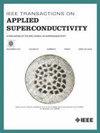Analysis of Screening Current Effects in a Hybrid Nb$_{3}$Sn/REBCO Superconducting Accelerator Magnet Using a T-A Formulation
IF 1.7
3区 物理与天体物理
Q3 ENGINEERING, ELECTRICAL & ELECTRONIC
引用次数: 0
Abstract
To explore the feasibility of using high-temperature superconducting (HTS) REBCO coated conductors in future accelerator magnets, two REBCO flat racetrack coils were fabricated using 4-mm wide EuBCO tapes at the High Energy Accelerator Research Organization (KEK). These coils were tested as an insert inside a Nb求助全文
约1分钟内获得全文
求助全文
来源期刊

IEEE Transactions on Applied Superconductivity
工程技术-工程:电子与电气
CiteScore
3.50
自引率
33.30%
发文量
650
审稿时长
2.3 months
期刊介绍:
IEEE Transactions on Applied Superconductivity (TAS) contains articles on the applications of superconductivity and other relevant technology. Electronic applications include analog and digital circuits employing thin films and active devices such as Josephson junctions. Large scale applications include magnets for power applications such as motors and generators, for magnetic resonance, for accelerators, and cable applications such as power transmission.
 求助内容:
求助内容: 应助结果提醒方式:
应助结果提醒方式:


